Would buying a Ryzen 5 7600 with a GeForce RTX 4070 Ti be a better option than the Ryzen 7 7800X3D with the RTX 4070 Ti? Both hardware combos cost the same. In other words, should you opt for the faster GPU or CPU? To find out, we’ve benchmarked both combinations.
Traditionally, we’ve recommended that gamers on a budget adopt the min/max strategy. This means spending as little as possible on almost everything, except the GPU, where most of the budget should be allocated. However, this isn’t always the best option depending on the games you play.
Plenty of games are CPU-bound, such as city builders, real-time strategy, and competitive shooters. For these games, upgrading your GPU might result in little to no performance improvement, depending on the CPU you’re using.
Still, the Ryzen 5 7600 is hardly a weak CPU, so the 7800X3D is less likely to offer a significant performance advantage with current generation mid-range GPUs. Despite its price, the RTX 4070 series remains mid-range, especially when compared to historical trends. But let’s not go down that rabbit hole, and move on.
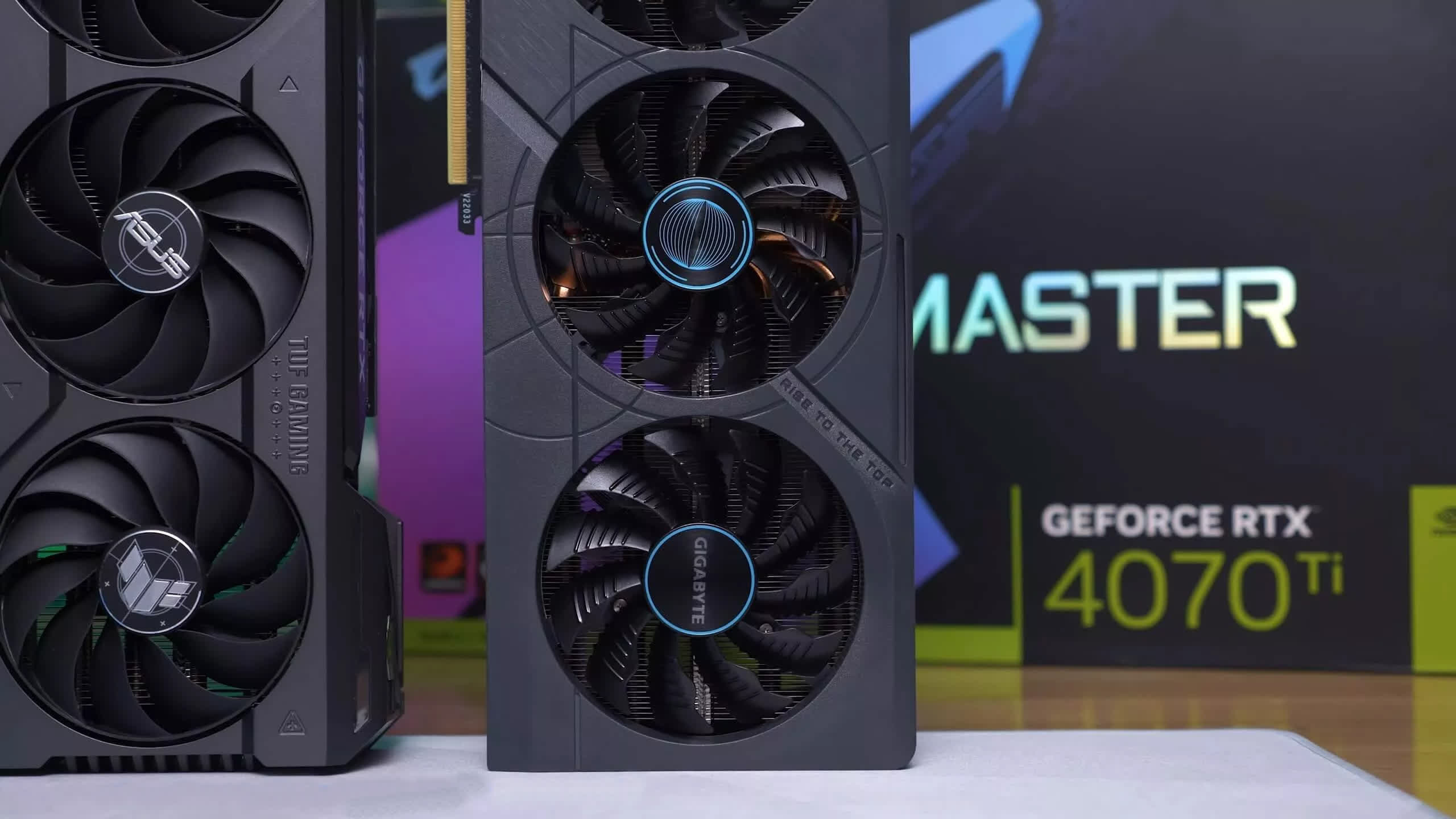
When we were first presented with this question which came from a reader we answered “it depends.” But it truly does depend. Are you playing new triple-A titles at high resolutions? If so, the min/max strategy would be the way to go. However, if you’re playing competitive shooters with competitive quality settings, you might become CPU-limited. In that scenario, the 7800X3D/RTX 4070 combo would be superior.
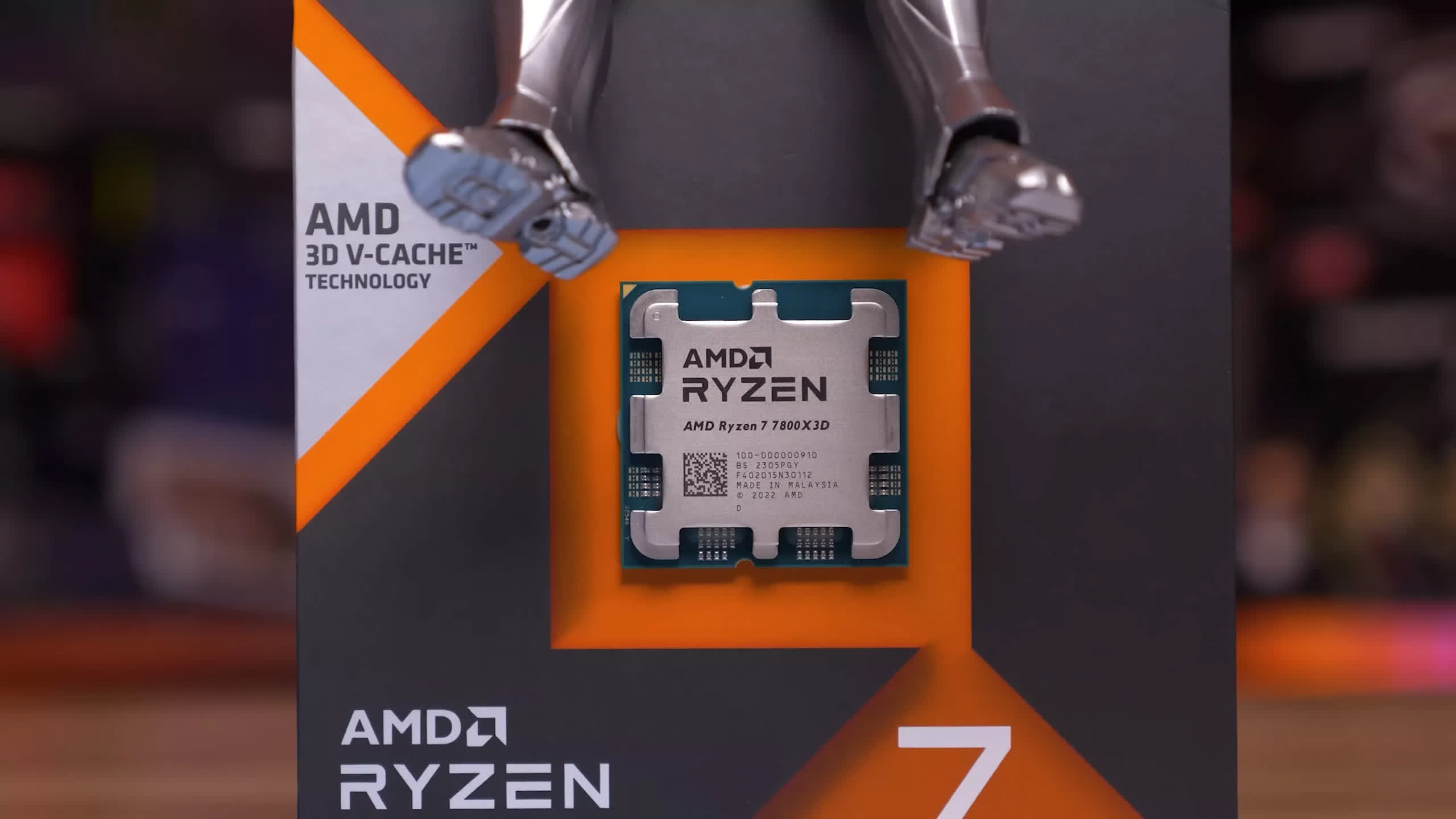
Or at least that’s consistent with what we’ve observed in the past when testing various CPU and GPU configurations, but an updated test looking at this specific hardware combo sounded like an interesting idea for a new feature, so here we go.
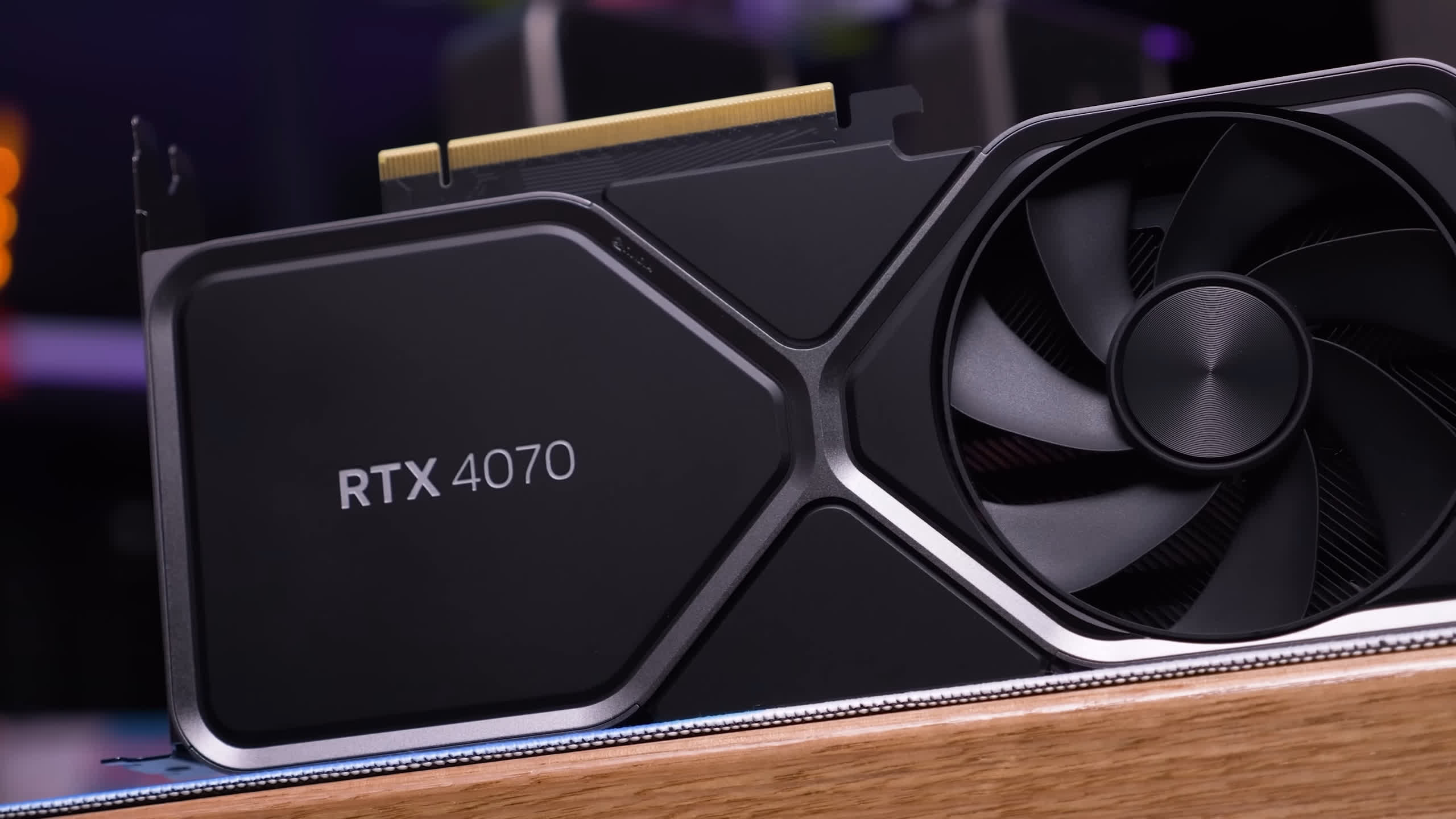
For reference, when paired with a high-end CPU like the 7800X3D, the 4070 Ti is generally 20% faster than the standard 4070 at 1080p, and then 25% faster at 1440p and 4K. On the CPU front, the 7800X3D is, on average, 30% faster than the 7600, although these results vary widely depending on the game used for testing. For benchmarking, both configurations were paired with DDR5-6000 CL30 memory on the Gigabyte X670E Aorus Master, using the latest F21a BIOS revision. Let’s get into it…
Benchmarks
Starting with Avatar, we see that even at 1080p, the 4070 Ti combo is significantly faster, delivering 32% greater performance. At 1440p, the margin increases to 35%, and a similar margin is observed at 4K. So, for visually demanding single-player games where you want to use the highest visual settings possible, investing more in your GPU is the way to go.

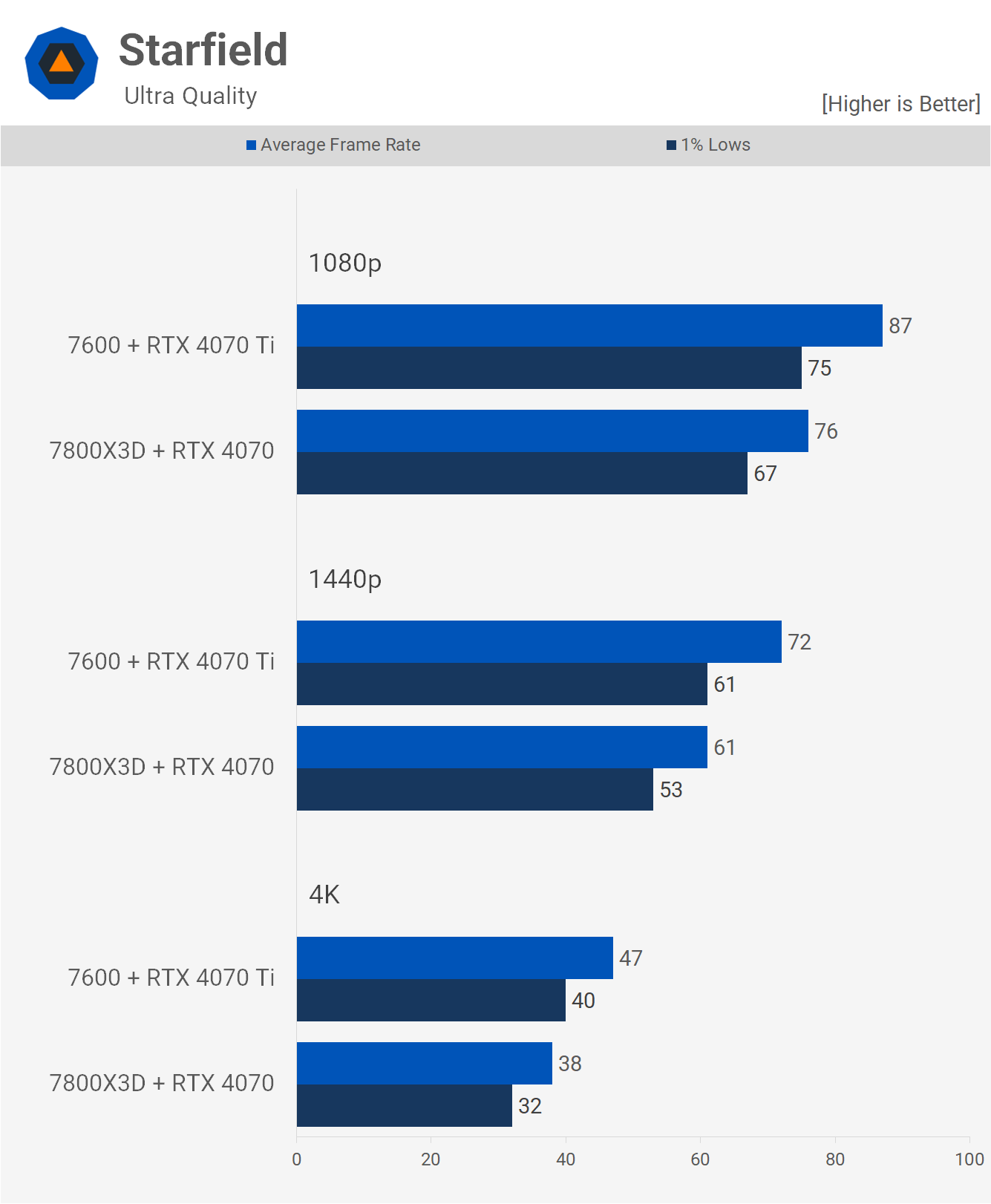
Now, Starfield is a more interesting single-player game from a hardware requirements perspective, as it is very CPU intensive. Still, the 7600/4070 Ti combo was faster, but this time by only a 14% margin at 1080p, then 18% at 1440p, and 24% at 4K. Given what we saw in Avatar, you might expect the margins in Starfield using the ultra preset to favor the 4070 Ti more.
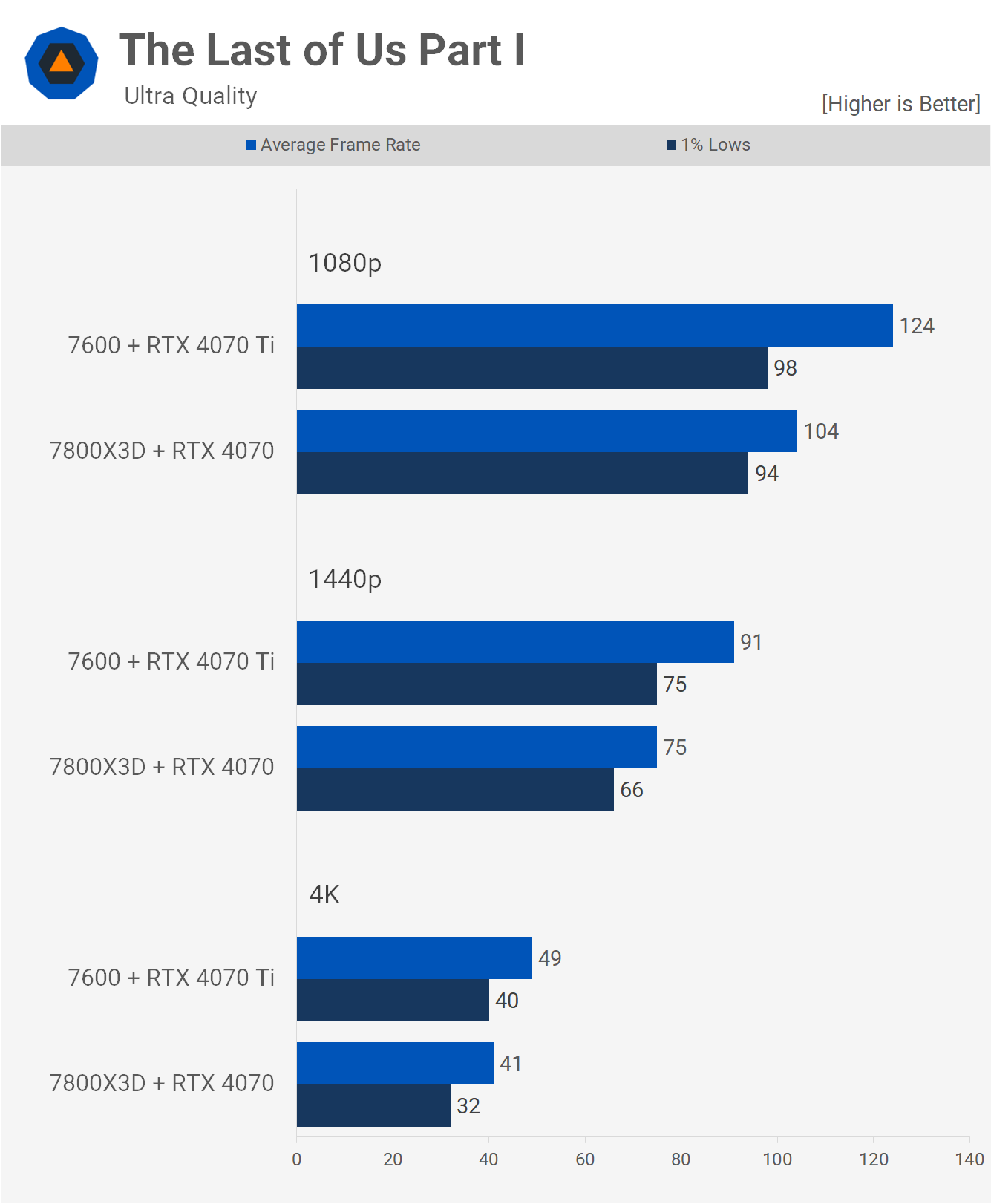
The Last of Us Part I is also very CPU heavy, and as a result, the 7800X3D combo performs better than expected. At all tested resolutions, the 7600/4070 Ti combo offered around 20% greater performance, so it was clearly faster, but the margins were much smaller than those seen with Avatar.
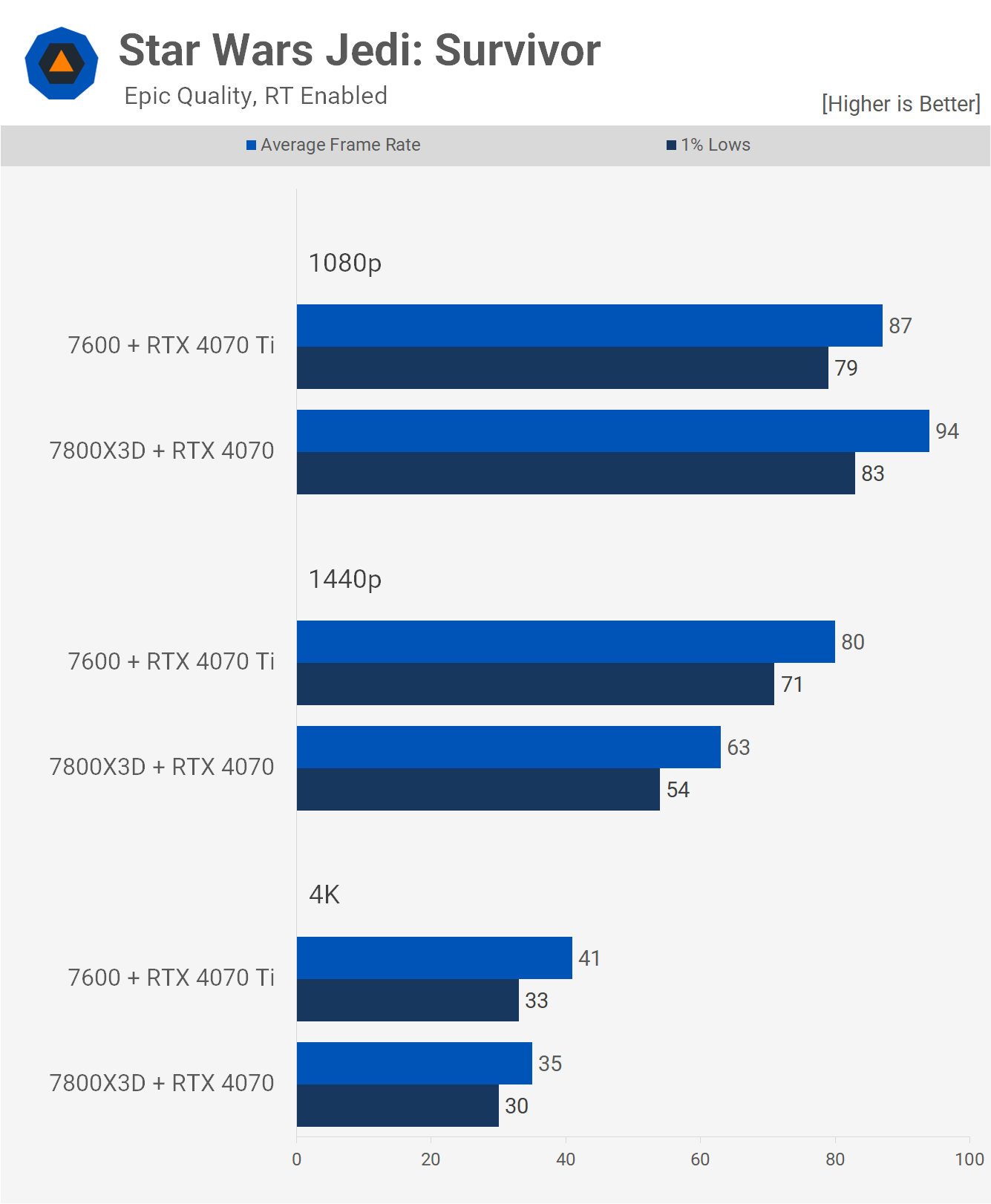
For testing Star Wars Jedi: Survivor, we enabled ray tracing, which increases CPU load. At 1080p, this gives the 7800X3D a small performance advantage. However, at the more GPU-limited 1440p resolution, the 4070 Ti provides a clear advantage, delivering 27% more performance. At 4K, the 4070 Ti appears to become memory-limited and is now just 17% faster than the 4070.

Marvel’s Spider-Man Remastered was also tested with ray tracing enabled. This allowed the 7800X3D/4070 combo to deliver more performance at 1080p and 1440p. However, at 4K, the 7600/4070 combo was 22% faster.
Realistically, both configurations enable high refresh rate performance. For most, the 7600/4070 Ti configuration will be more than sufficient at 1440p, despite being slightly slower than the 7800X3D/4070 combo.
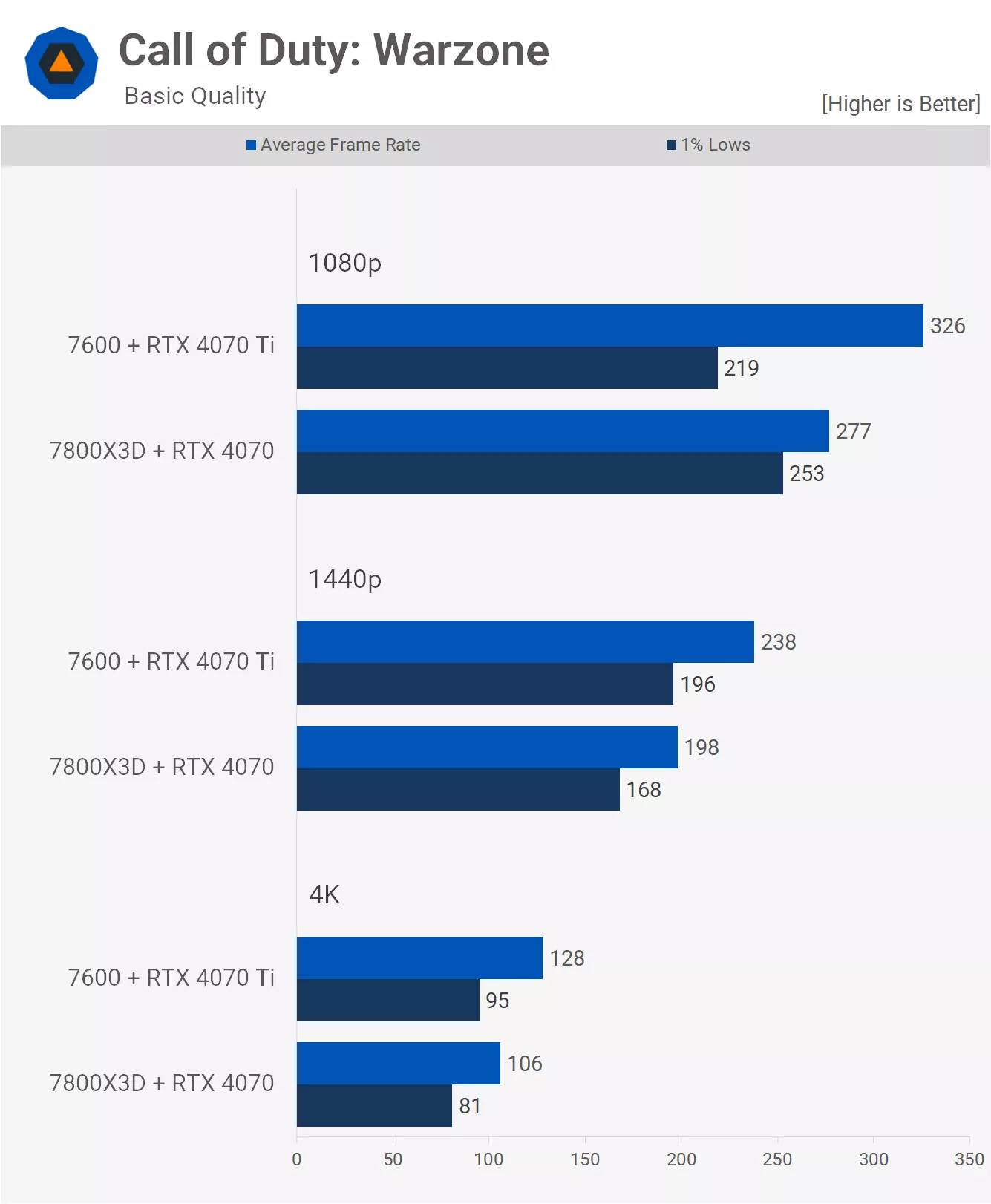
Call of Duty: Warzone was tested in the solo battle royale mode, a challenging scenario to replicate in a multiplayer title. To our surprise, the 7600/4070 Ti combo was generally faster, though the 7800X3D did enable better 1% lows at 1080p.
Due to the difficulty in testing this game, our test scenario was light on action to avoid elimination during benchmarking. Consequently, it might not represent the most demanding section of a match. Adjusting visual settings could shift performance more towards CPU reliance, but with the basic preset in our test area, the faster GPU is generally more advantageous.
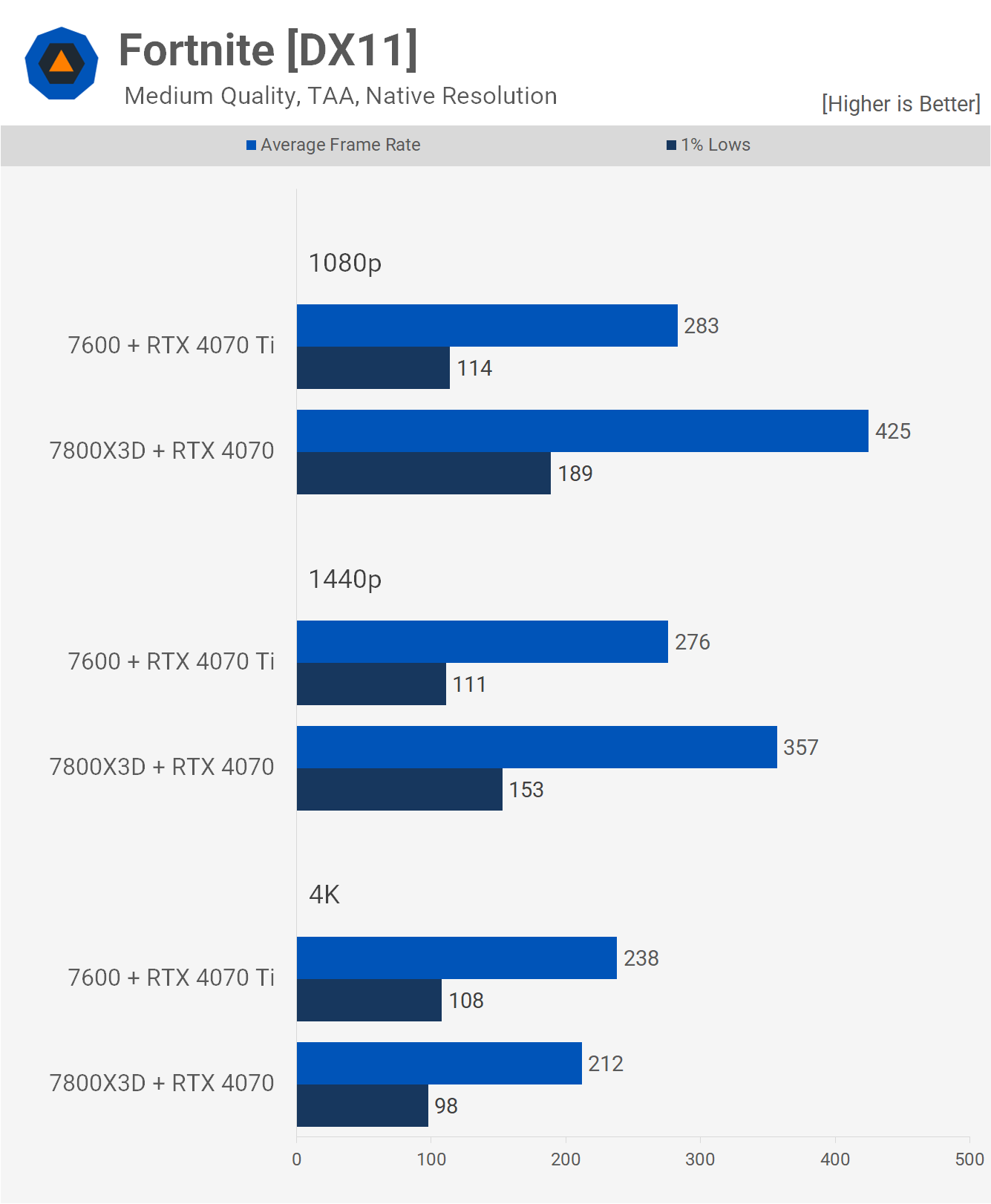
Thanks to the replay feature, it’s possible to benchmark intense end-game scenarios in Fortnite. At 1080p, the 7800X3D/4070 combo delivered 50% more performance, a substantial uplift. We also saw a 65% increase in 1% lows, which most skilled gamers will notice, making a strong case for a more powerful CPU.
Even at 1440p, the 7800X3D was up to 38% faster, and this difference is noticeable. It’s not until 4K that the 4070 Ti takes the lead, though by a narrow margin. Many Fortnite gamers use lower settings for a competitive edge, suggesting there’s still potential to make the game more CPU-limited.
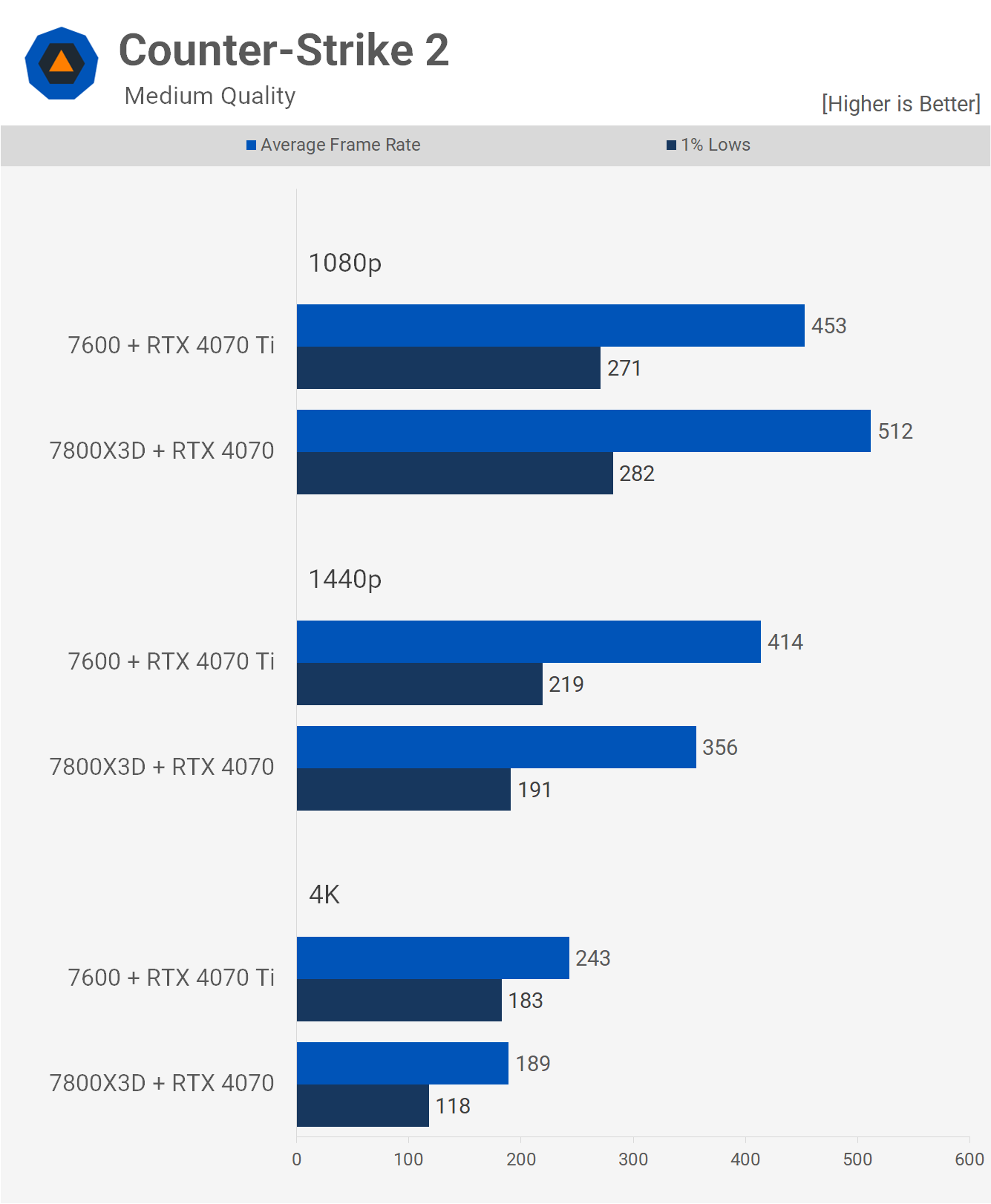
Finally, with Counter-Strike 2, the 7800X3D/4070 Ti was slightly faster at 1080p and slightly slower at 1440p. Only at 4K did the 4070 Ti combo offer a substantial 29% performance increase. Using lower quality settings could make the game more CPU-limited, but medium settings seem to provide a good balance. Both configurations delivered over 300 fps, even at 1440p.
What We Learned
So there you have it. As expected, allocating more of the budget towards the GPU will enable a higher level of gaming performance in most games, especially modern triple-A single-player titles. However, keep in mind that this is only true up to a certain point. The Ryzen 5 7600 is still a very powerful gaming CPU, delivering similar gaming performance to that of the 5800X3D or Core i5-14600K.
This means if we were to compare the 7800X3D + RTX 4070 to, say, the Ryzen 5 5600 + 4070 Ti, the results wouldn’t have been as favorable for the higher-end GPU combo. Of course, the point of this comparison was that both hardware combinations could be purchased for the same price, which is why the reader asking the question wasn’t sure which combo was worth investing in.
Generally speaking, the min/max strategy works well.
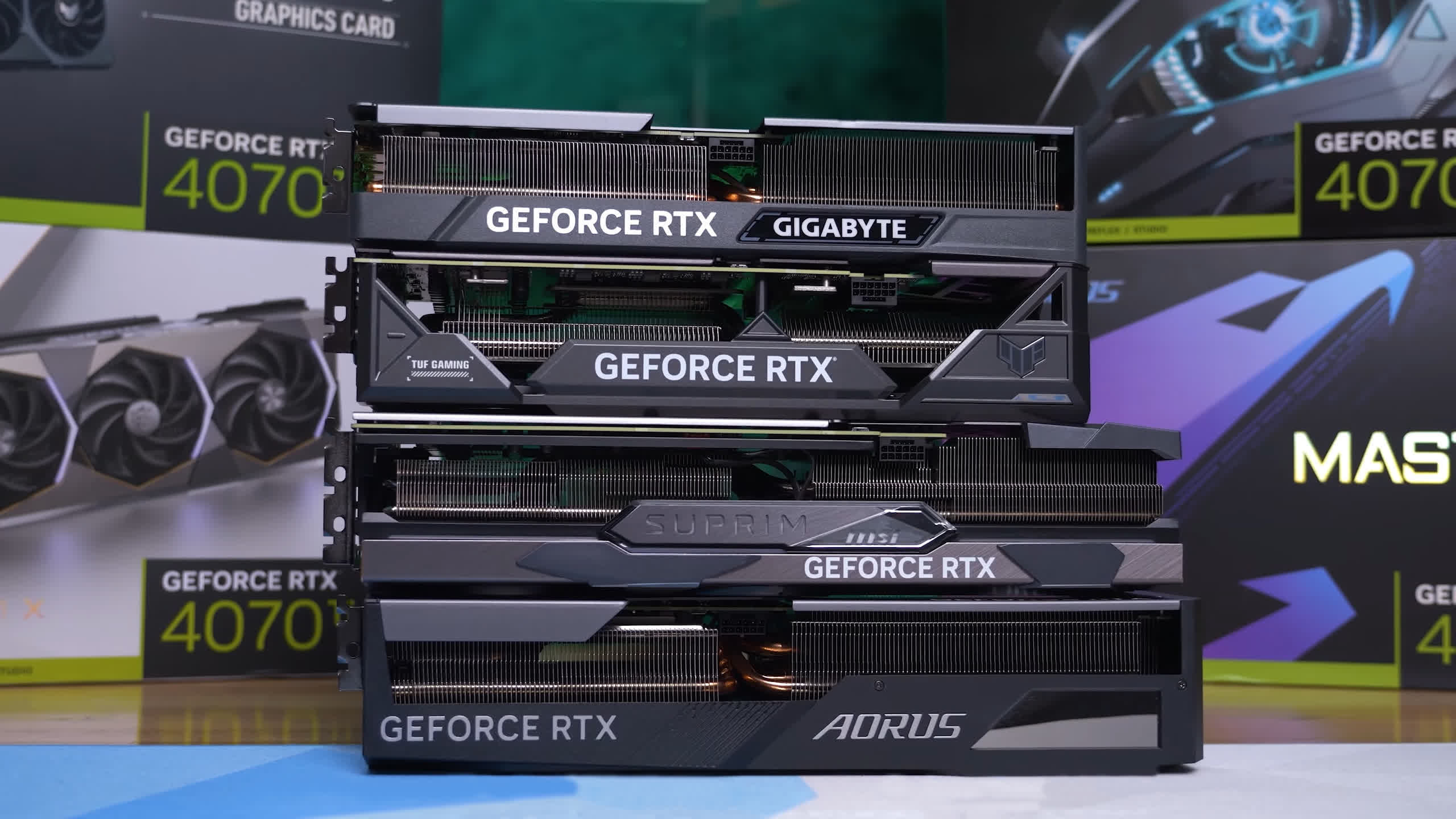
As dominant as the RTX 4070 Ti combo was, there was one game where the 7800X3D and RTX 4070 performed much better, and that game was Fortnite.
Now, if you’re a single-player gamer who plays games such as Avatar, Alan Wake 2, Starfield, and so on, you might wonder why anyone would need more than 280 fps in Fortnite. That’s a fair question. In that example, it was the 1% lows that were more of a concern, but even so, there are multiple benefits to higher frame rates overall, assuming you have the monitor and the skill to take advantage of them.
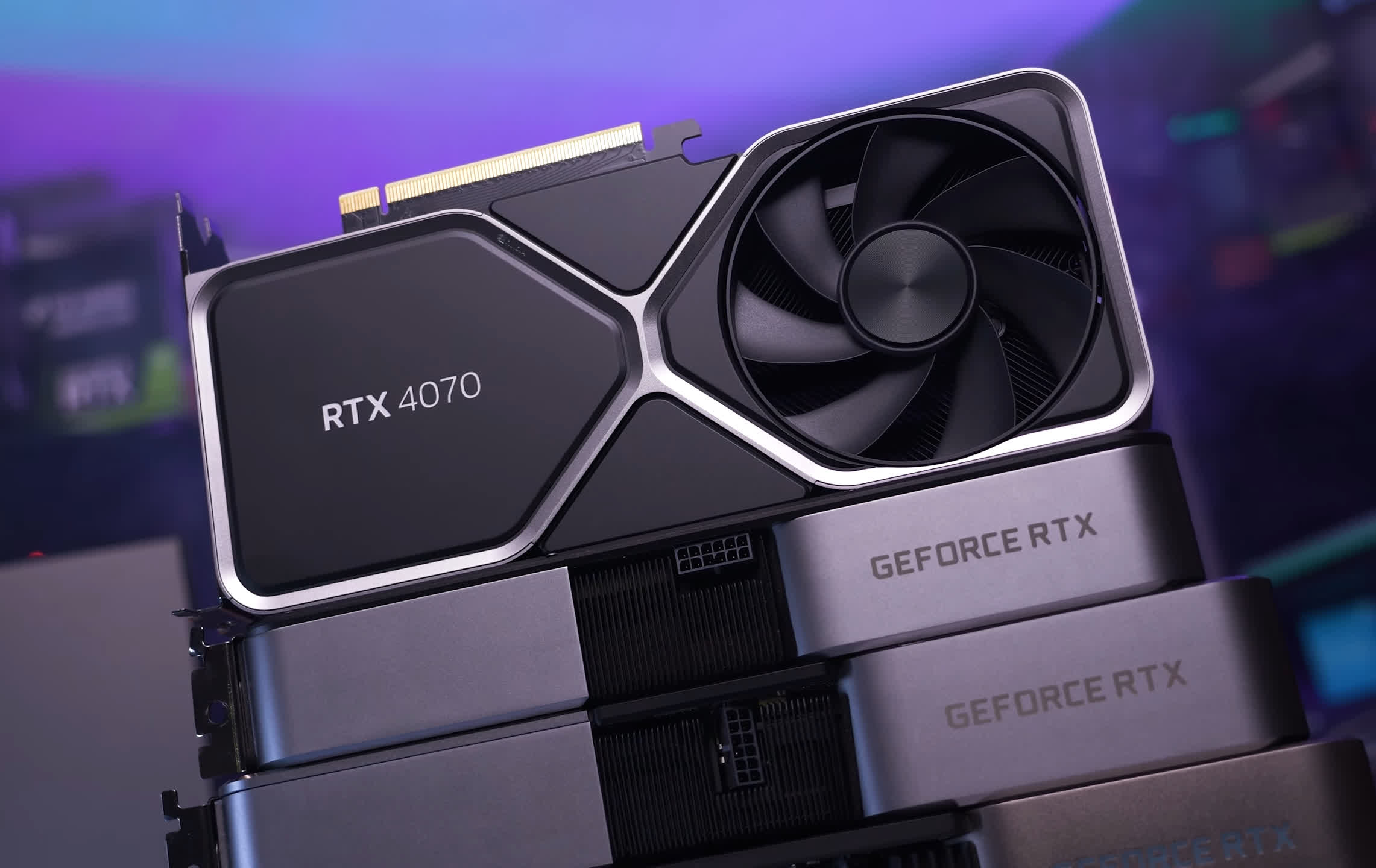
Moreover, you’ll likely encounter scenarios within the game that are more heavily reliant on the CPU than what we tested here. The same applies to Counter-Strike 2 and Warzone. There are certainly more games we could have tested that would show results similar to what we saw in Fortnite. An obvious example would be Starcraft II, which is incredibly CPU-limited, especially in end-game or 4v4 matches with large unit counts.
But the point of this test wasn’t to spend days or even a week testing our entire game library. Rather, it was to demonstrate that depending on the game, and how you like to play it, one configuration can deliver better results than the other. Generally speaking, the min/max strategy works well.
